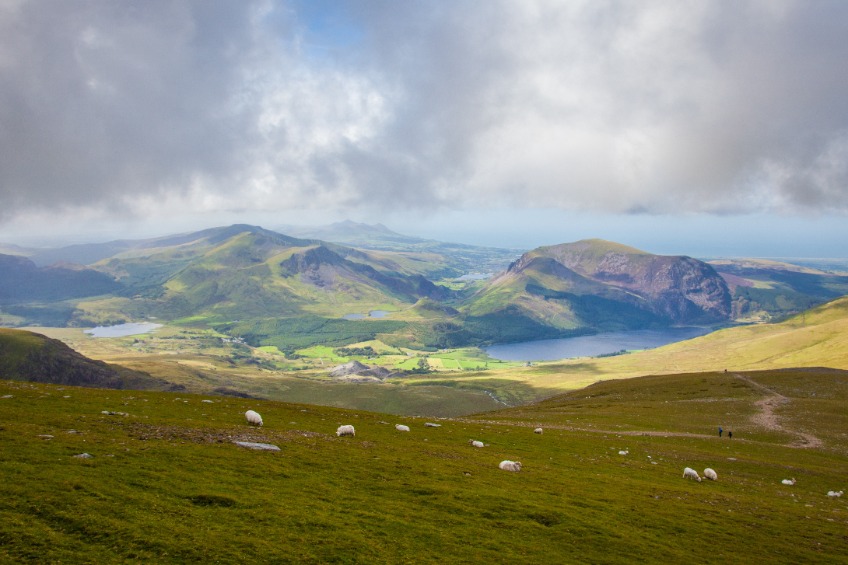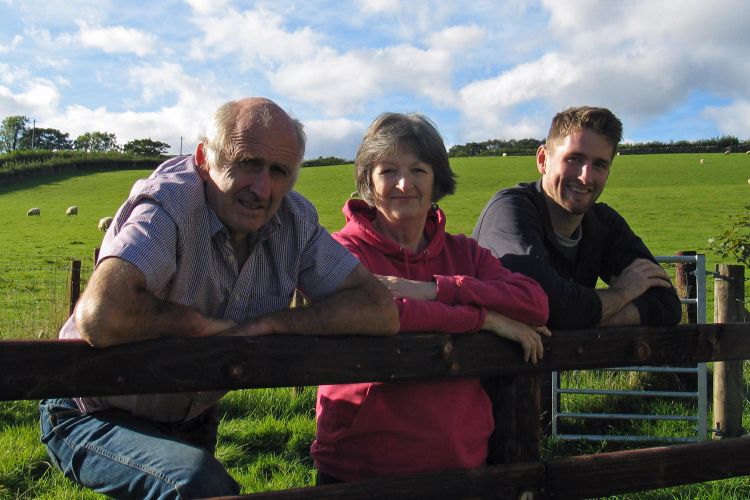
Over twenty Welsh hill farmers are taking part in a pioneering environmental project to see how their sheep work alongside nature and biodiversity.
The auditing programme, launched during the summer, will evaluate where upland farming stands in terms of its environmental credentials, and what scope there is for further improvement.
Gwynedd farmers Huw and Rhys Evans are taking part in the Hybu Cig Cymru (Meat Promotion Wales) Hill Ram Scheme, with their mantra being "you can’t manage what you don’t measure."
The family farm 300 acres at Hengwrt, near Dolgellau, with the property extending from 400 to 2,400 feet near the summit of Rhobell Fawr mountain on the western end of the Arenig range.
Lambing their flock of Welsh mountain Meirionnydd type ewes outdoors on the inbye, they are moved uphill to the mountain after lambing.
Winter grazing is sought for 100 replacement ewe lambs on the Welsh-English lowland borders, and lambing begins at Hengwrt in April.
Rhys Evans said: “If you have a thriving biodiversity and environment then the condition of your natural resources is strong and that is what gives you the bedrock to then produce food.
“We’re fairly confident that our biodiversity is good at Hengwrt, but we need it measured so we can sustain it, and hopefully further improve it.

“We try to farm within the natural abilities of the land as much as possible, using native stock, not overstocking because it's important to work within the natural production capacity of the farm, without compensating wildlife and the environment.
“We do buy in a little feed and fertilizer, but we’ll be looking at ways to reduce our reliance on these, particularly given the huge rise in input costs."
Hengwrt lambs are sold deadweight with some breeding stock sold off the farm and draught ewes sold at three and four-year-olds to breed on at their local market every autumn.
Since 2018, Hill Ram Scheme farmers have been using DNA-based technologies to record the performance of hill flocks, enabling genetic data to breed selectively to improve commercial performance and environmental sustainability.
Huw said the scheme had given the family the tools and expertise to use the data collected to identify the poorer performing ewes, so they could improve the flock performance in general.
“Our pedigree herd of Welsh Black cattle are descendants of my grandfather’s stock, bought when he purchased Hengwrt in 1927. We are very proud of the cattle’s family bloodline.”
It’s estimated that just under 10% of the farm at Hengwrt is woodland, with nearer 20% tree covering on the inbye land only, a haven of shelter for stock during winter months and shade during the summer
Trickling brooks and small ponds dot the farm plus corridors of hedges planted as part of the Snowdonia National Park scheme in recent years.,
The variety of plants and flora is varied within the hay meadows, grassland and mountainous areas of the farm. Heather, wild orchids, sundews, sedges and wild thyme attract bees, insects, birds and small mammals.
Rhys said the family were really looking forward to seeing the biodiversity report: "I think there’s a huge opportunity for us as an industry to showcase to the world what sustainable farming looks like.
"We’re up to the challenge to be part of the solution not the problem.”
